Dijet Resonance Anomaly Search
The first application of anomaly detection in CMS
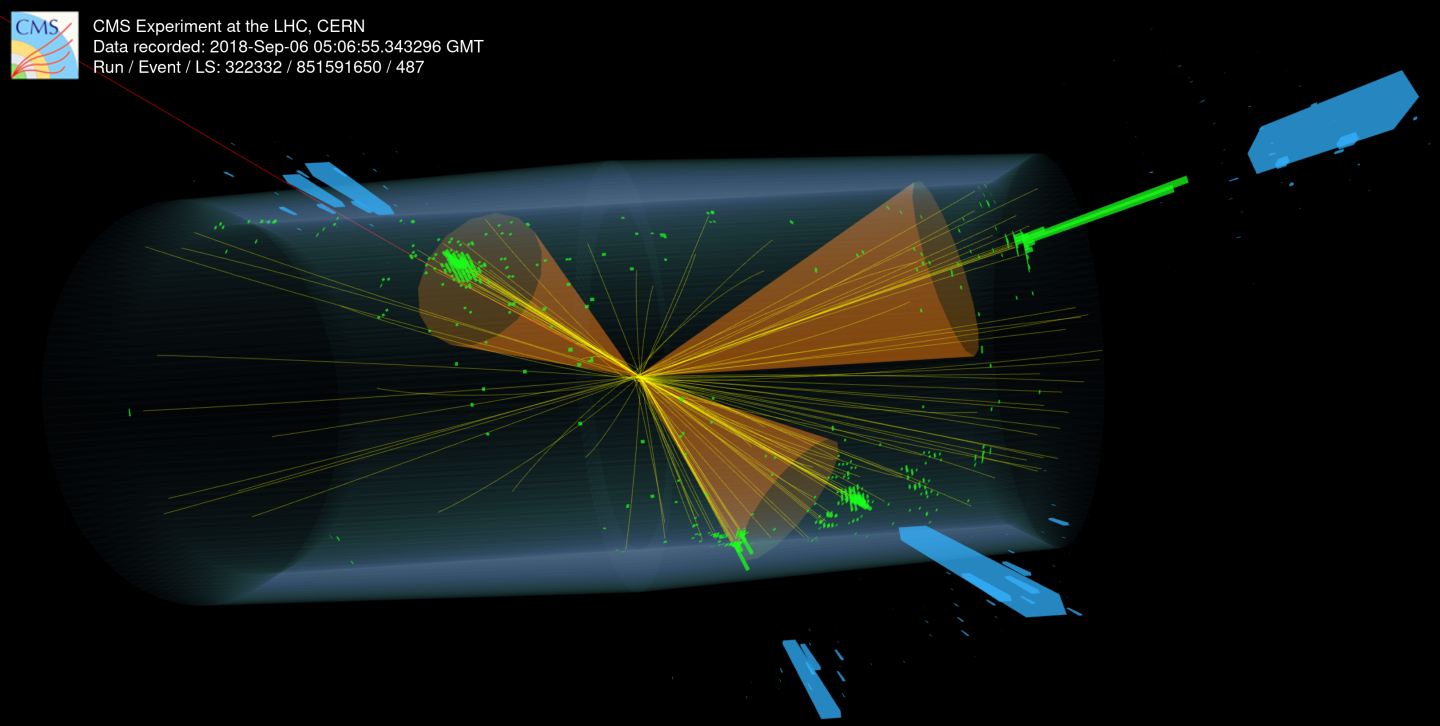
LHC experiments spend a lot of time searching through their data for signs of new particles. If new particles exist, they are likely produced extremely rarely, and may leave signatures very similar to those of much high rate background processes. So in order to perform searches, analyzers have to carefully design a statistical analysis to target a particular signal. Such analyses often have great sensitivity to the particular particle being searched for, but very poor sensitivity to anything else. While this approach was a spectular success in the case of an ‘expected’ new particle like the Higgs, one may wonder if we could be missing ‘unexpected’ new particles because we haven’t thought to (or had time to) search for them.
This is the gap in coverage that ‘anomaly detection’ tries to solve. The strategy is use novel ML methods to cast a wider net that would otherwise be possible, making sure we are prepared for the unexpected. Tag N’ Train (Amram & Suarez, 2021) , one of my projects from grad school, was one such type of anomaly detection algorithm. We showed it could be successfully find signals in simulated datasets and data challenges. But of course the real challenge is to actually apply it to real CMS data (and convince CMS beaurocracy to publish a crazy new idea like this).

The title of the paper is ‘Model-agnostic search for dijet resonances with anomalous jet substructure in proton-proton collisions at sqrt{s} = 13 TeV’. ‘Jets’ are colimnated sprays of particles that show up in our detector originating from particles in the collision that interact with the strong nuclear force (ie quarks or gluons). They are the most common type of signature produced in a proton-proton collider like the LHC, which means searches for new particles producing jets will have large backgrounds that limit their sensitivity. While jets from different types of particles look the same on the surface, they can differ in terms of their ‘substructure’, or how the energy of the jet is distributed among the different particles in the spray. Normal jets produced by quarks and gluons typically have the majority of their energy aligned with a single central axis. But jets resulting from heavier particles can have their energy spead along 2,3, or more axes depending on the type of heavy particle. There is a huge space of possibilities for how the substructure of jets from new particles could look like. A program of searches targetting different substructure signatures has been ongoing for the last 10 or so years, but they have mostly focused on the simplest cases, leaving large number of possibilities still open.
This search casts a wide net for these type of signatures, looking for any new particle decaying to two jets with ‘anomalous’ substructure, distinct from regular jets. Because we didn’t know exactly what we are looking for, we employed five different anomaly detection methods to identify anomalous jets. Each was done as essentially a separate analysis of the data, but all lived within a common framework: each method started with the same set of events, selected the events that appeared anomalous, and then used a common statistical framework to analyze the results.
The most important step is of course the selection of the anomalous events and because each method made different assumptions and used different techniques, we expected them to have complementary sensitivity to different types of anomalies. In addition to applying two of the algorithms (my own Tag N’ Train and a close cousin CWoLa Hunting) I also developed the analysis framework, statistical procedures, systematic uncertainties and coordinated the different teams.
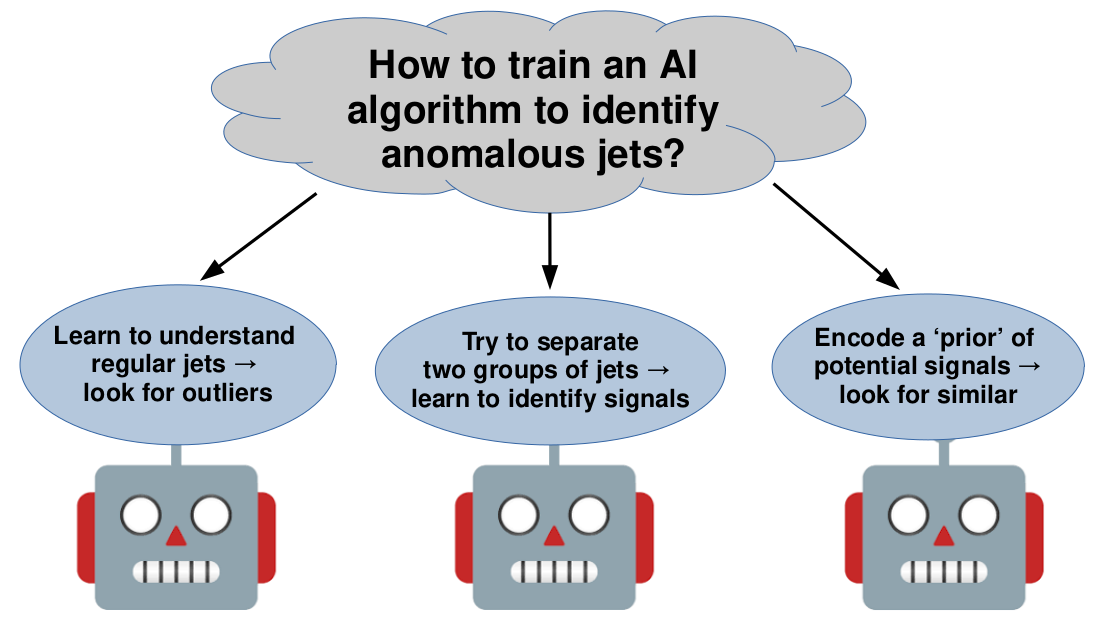
The different algorithms were based on different philosophies of how to identify anomalous jets. One approach, based on ‘unsupervised’ learning, trained a model that learned what standard jets looked like and then selected events that looked dissimilar from those as anomalous. Three methods employed what is known as weak supervision, in which a model is trained to separate two groups of jets in data, one of which is potentially signal-enhanced. The three methods were made different assumptions about the signal and background, and therefore constructed the two groups of data jets differently. Tag N’ Train was one of these methods, with its unique assumption being that both of the jets in the event are anomalous (other methods assume it could possibly be just one). The last method was ‘semi-supervised’, a hybrid between a fully model agnostic and standard approaches. This method used an ensemble of example signals as a ‘prior’ that potential anomalies may look like and then selected events that looked similar to these priors and dissimilar to standard backgrounds.
Before unleashing these methods on the real data, we did extensive testing in simulation to validate them. We verified that no method had a significant bias in its selection of anomalous events such that the following statistical analysis would falsely claim a signal (ie no false positives). We also verified that for realistic amounts of signal present in the data, these anomaly detection methods could greatly enhance the discovery potential as compared to standard approaches. In many cases, a standard approach would have seen only very slight hints of a new particle (\(\sim 2 \sigma\)) while multiple anomaly detection methods would have been able to claim a discovery (\(> 5 \sigma\))! Our testing also showed that there was no one ‘optimal’ anomaly detection method; they each performed better or worse on different signals.
After all this validation we finally ‘unblinded’ and unleashed our algorithms on the real data. Unfortunately no method found any significant evidence of new particles :(
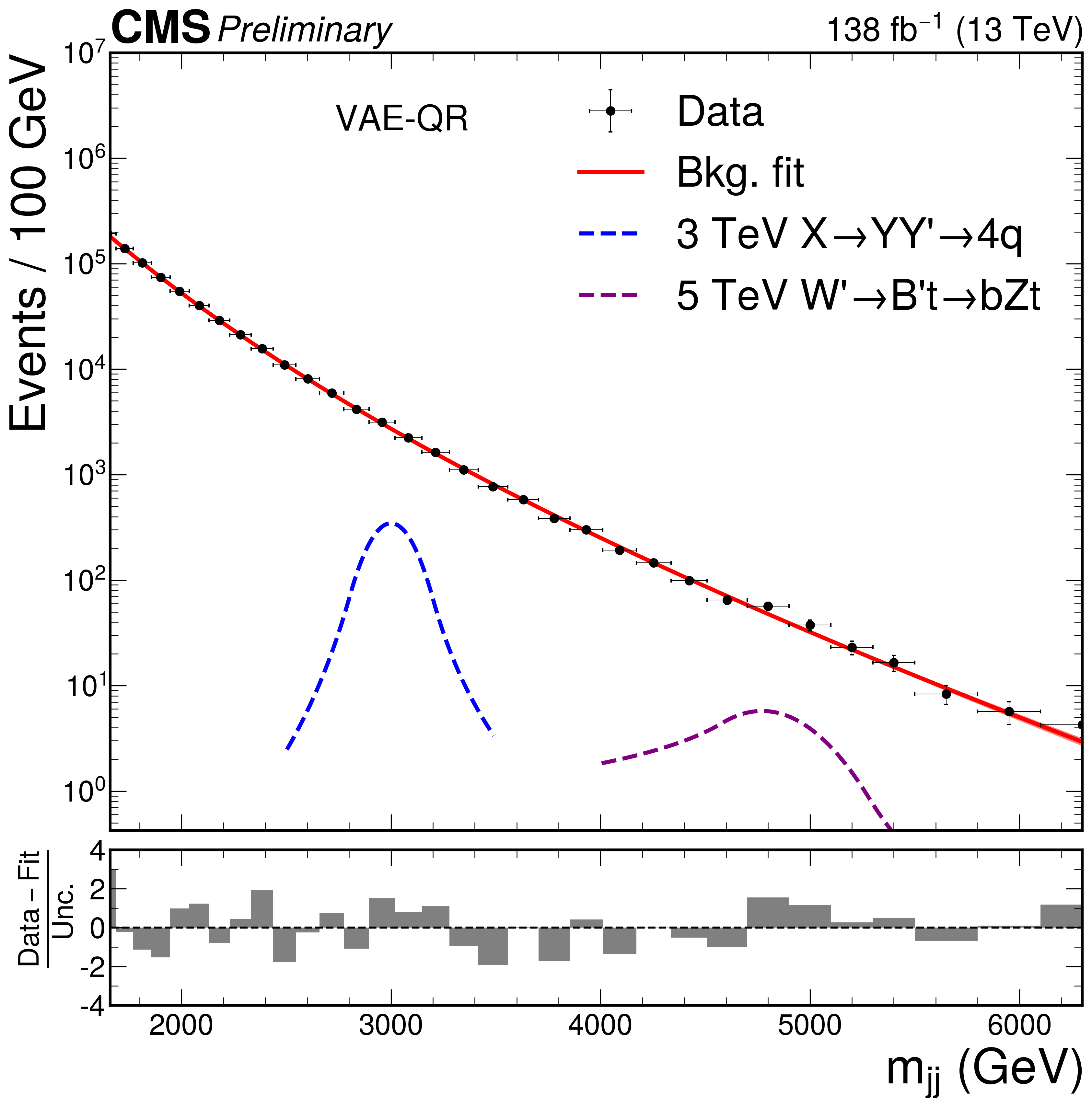
The typical thing to do with a null result search is to place limits constraining the existence of particles which your analysis was sensitive to. While this is a standard practice for a null-result search, it required significantly more work than usual for this type of analysis. First, I had to develop an entirely new method for calibrating the modeling of the substructure of exotic jets because prior methods were not applicable (this led to an entirely separate paper on just this method). The other vary serious complication is that performance of the weakly supervised methods (aka signal efficiency) changes dramatically depending on the amount of signal in the data. Running on data with no signal present tells you nothing about what you would have seen had there been signal present (which is what you care about when computing an exclusion limit). So we had to employ a novel statistical procedure to account for this, which meant a lot of scrutiny in CMS internal review before eventually being ok’ed.
In the end based on our results we were able to place limits constraining the existence of a wide variety of different particles. Compared to a traditional search strategy optimized for a single particle’s signature, the anomaly detection methods produced less constraining limits. However, they were able to set limits on a much larger variety of signal models than the traditional method (which is usually only be sensitive to that single particle).
After spending many months agonizing about limits, I came to prefer a different method of quantifying the sensitivity of the anomaly detection methods. This metric computed how many signal events (aka cross section) would be needed to claim a discovery (\(5 \sigma\)) from each method. We showed that for several signals the anomaly detection methods were able to claim a discovery with usually with a factor of ~3-4 fewer signal events (Tag N’ Train even reached up to a factor of 7 for one signal). I think this metric highlights the spirit of anomaly detection: Its about increasing our chances of discovery! Not setting limits.
This analysis was the first ever use of anomaly detection by CMS, and while it isn’t the first in particle physics overall (ATLAS has had a few results) it is definitely the most comprehensive. We used five algorithms instead of just one to have as broad of coverage as possible. We also significantly ramped up the power these algorithms by using many more discriminating features than prior searches. The technique I developed to calibrate the ML-based identification of exotic jets has now become standardardized and is being used in several other analyses.
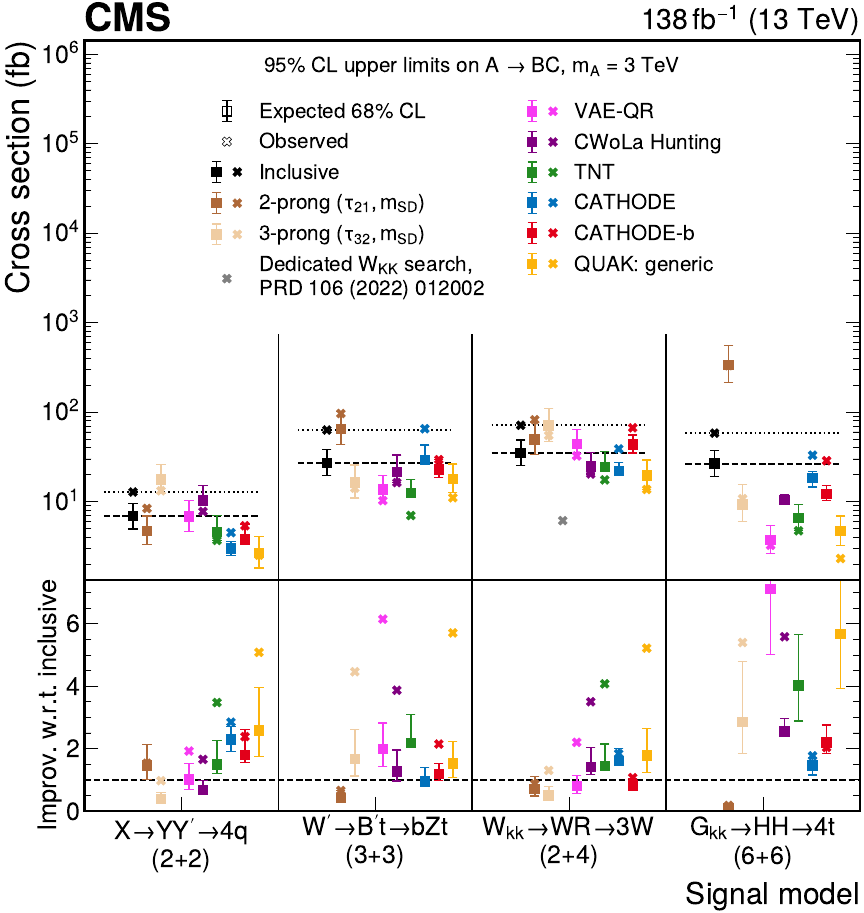
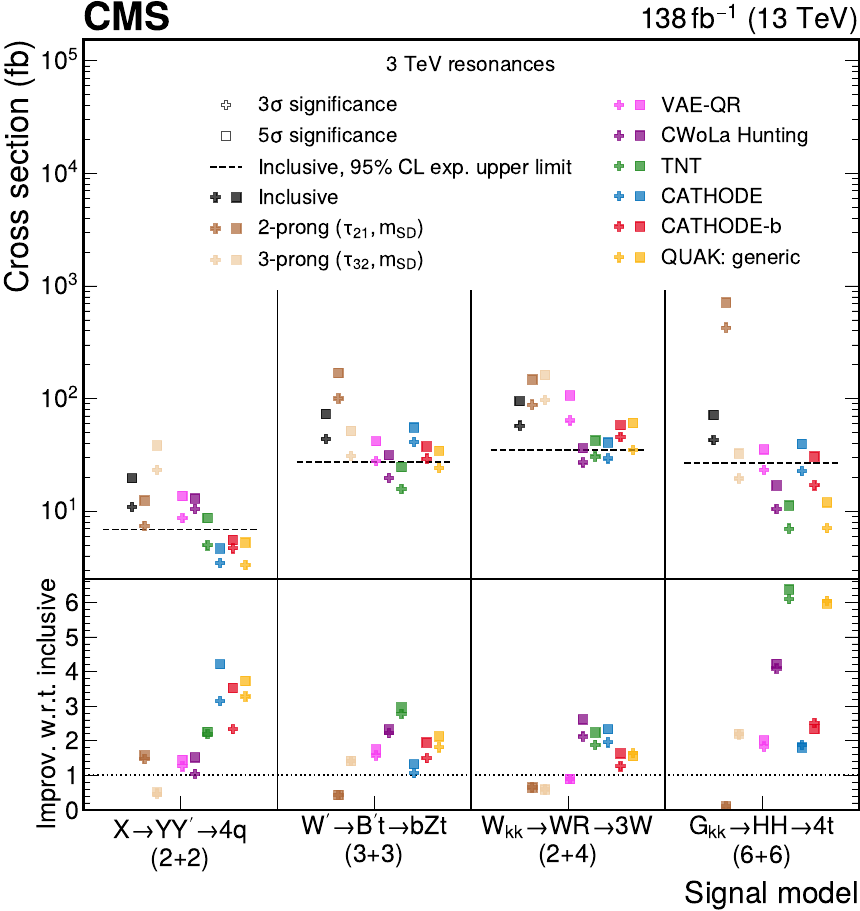
To read more you can check out the CMS ‘Physics Briefing’ I wrote here
This project resulted in three publications: search paper with the main physics results (CMS Collaboration, 2024), a paper with more details on the machine learning strategies employed (CMS Collaboration, 2025), and the paper on calibrating these exotic jets (CMS Collaboration, 2025).
I’m also excited to build upon this work for new anomaly detection searches in CMS! The autoencoder used as part of the TNT method, along with the jet substructure calibration technique I developed, was used to search for heavy resonances decaying to a Higgs and an anomalous jet (CMS Collaboration, 2025). A new class of searches I am interested in performing is looking for resonances produced in association with additional anomalous event activity, we explored this in a phenomenological study (Brennan et al., 2025) .